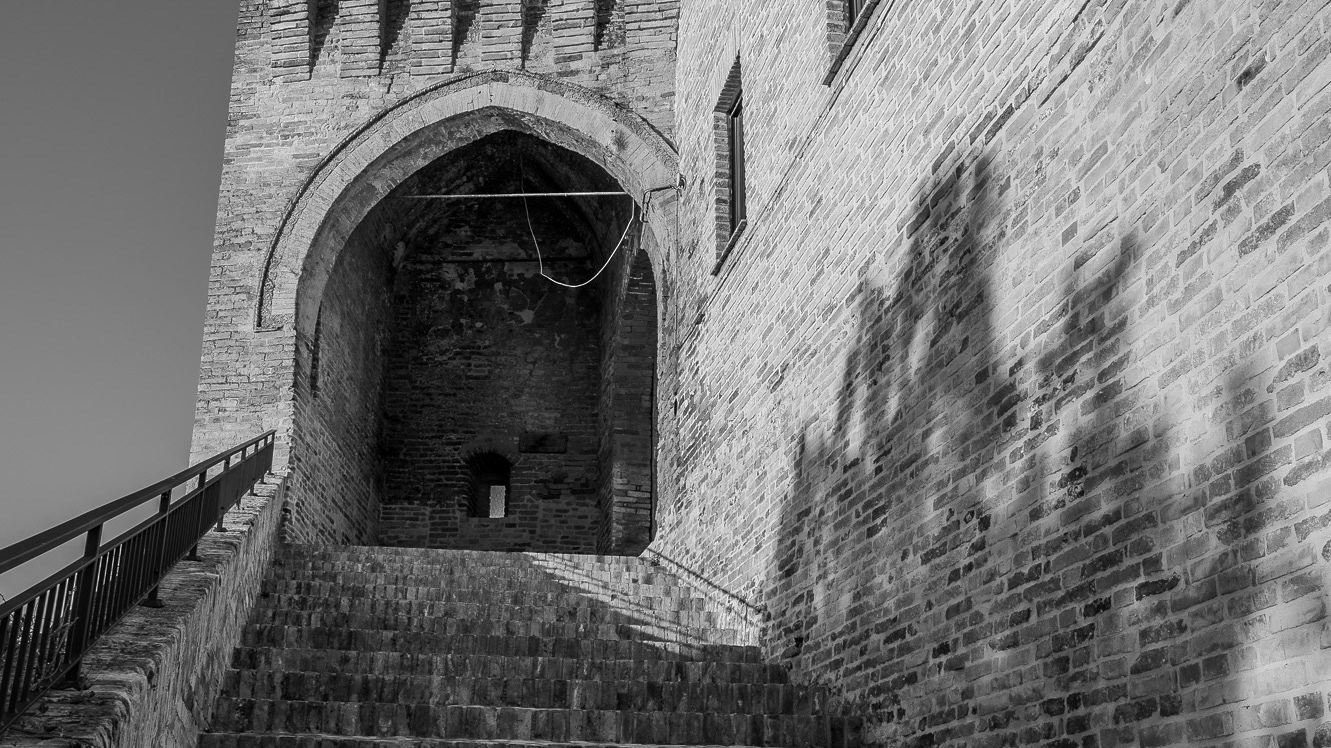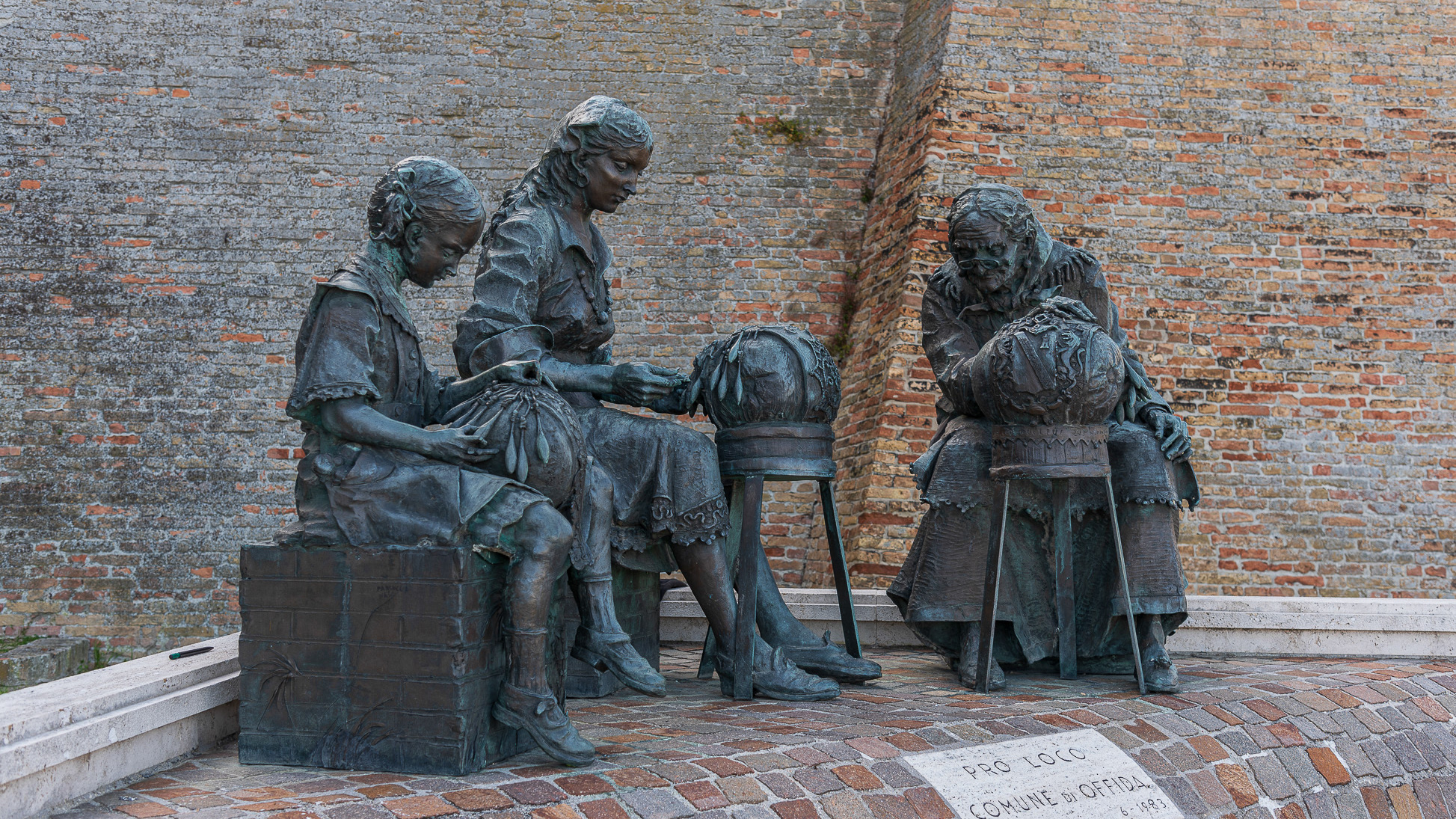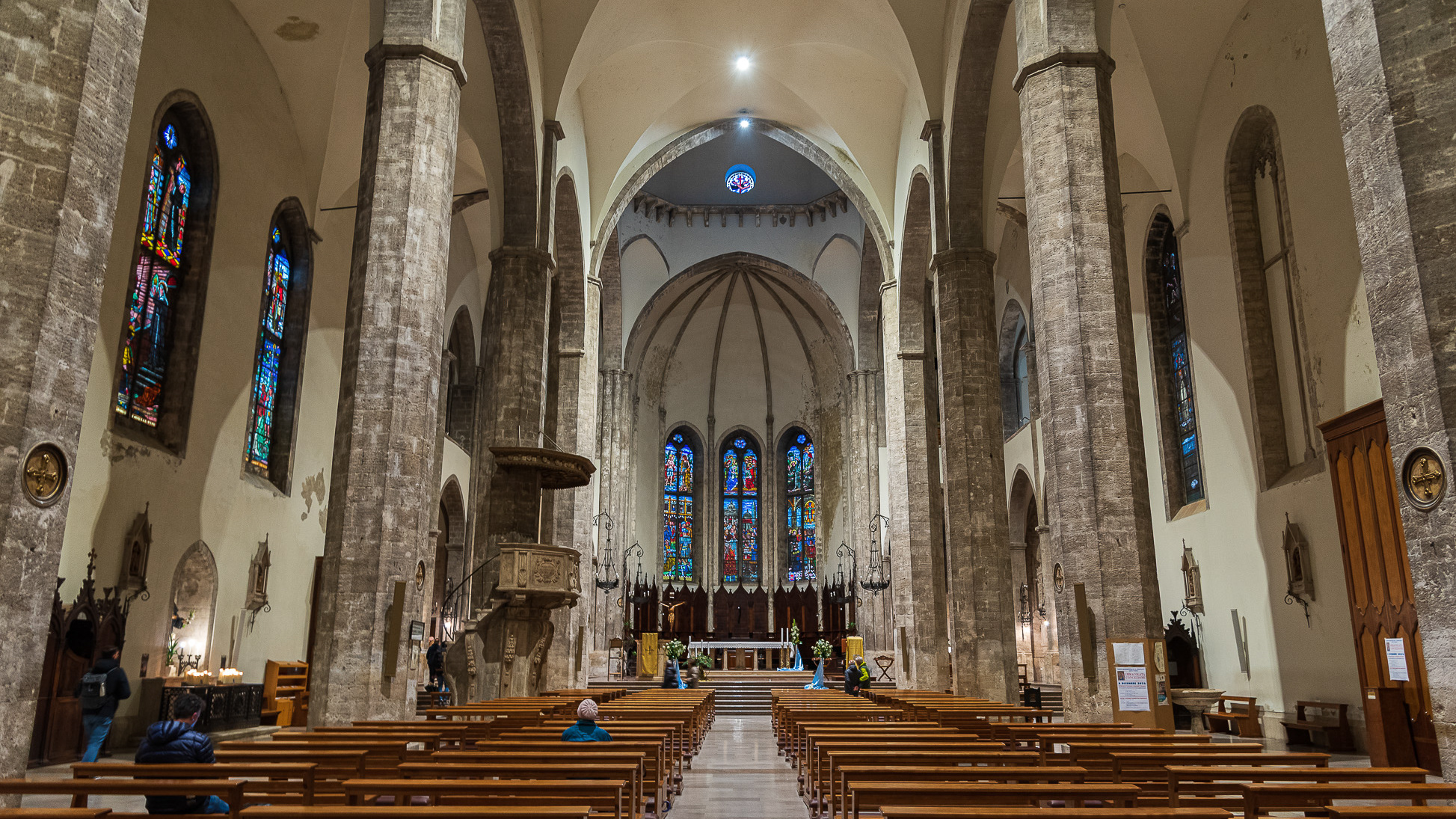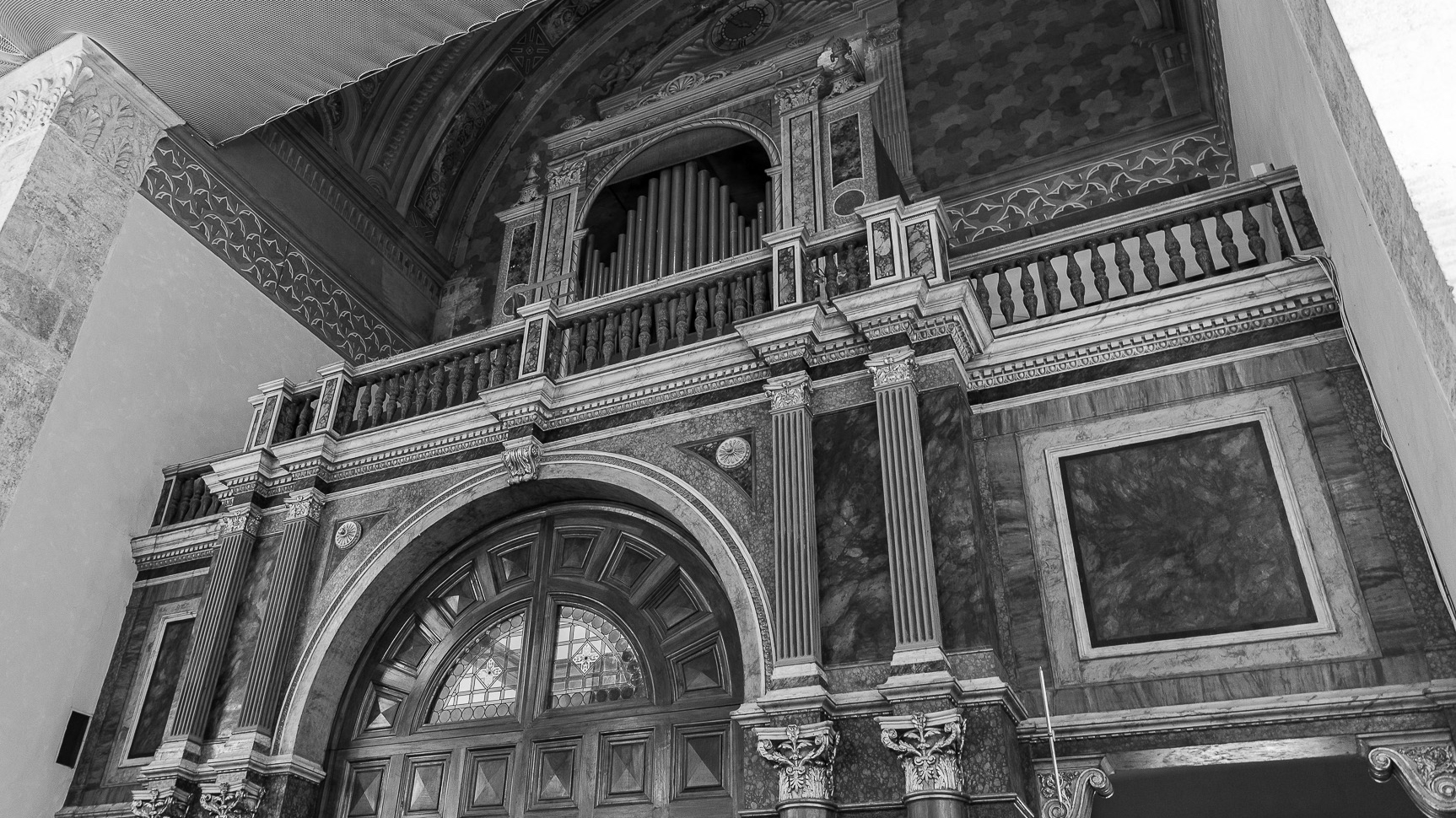Ascoli Piceno. The Church of San Francesco
2022
This church is considered one of the best Italian works of Franciscan architecture, as well as the most representative Franciscan religious building in the Marche region. It was begun with the adjoining convent in 1258, consecrated in 1371 and completed with the dome in the 16th century. On the main facade, in Via del Trivio, there are three Gothic portals, while the right side acts as a scenic backdrop to the Piazza del Popolo and is characterized by the dynamic fifteenth-century apses, the fourteenth-century side portal surmounted by the monument to Julius II of 1510 and ends with an apsidal group of rare architectural model.
You may also like
2022
Offida, Ascoli Piceno. Church of S. Maria della Rocca
The church is located on the western edge of the town, surrounded on three sides by cliffs that open onto two valleys. It is a Romanesque-Gothic brick construction, built by Maestro Albertino in 1330 on a pre-existing small Benedictine church. The façade, facing the outside of the town, is articulated by pilasters and on the opposite side there are three high polygonal apses with white stone pilasters, single lancet windows and Gothic arches. On the central apse there is a Romanesque-Gothic portal that leads into the crypt (3 then 5 naves), as wide as the upper church and decorated with frescoes attributed to the Master of Offida. The upper church, with a single hall according to the tradition of the mendicant orders, preserves frescoes of Giotto influence, still attributed to the Master of Offida (those of the transept are dated by an inscription to 1367) and others attributed to Giacomo da Campli (15th century) . Part of the original decorations were also lost due to the deterioration of the roof. In the side altars, erected in different eras, there is the one dedicated to Saint Andrew, from the 15th century, with an altarpiece frescoed on the wall by Vincenzo Pagani. During the advance of the allied troops, between 16 and 18 June 1944 some German soldiers had completely undermined the church so that the rubble was in the way of the allies, but none of the thirty mines exploded and the inhabitants attributed the episode to a miracle of the Virgin. On the left side of the first step of the staircase leading to the church a sheep is represented eating a four-leaf clover; popular belief has it that if you position yourself on it, walking backwards along the staircase, with your eyes closed, your wish will be fulfilled.

2024
Acquaviva Picena. Glimpses
Acquaviva Picena is an Italian municipality of 3,630 inhabitants in the province of Ascoli Piceno in the Marche region

2025
Marche. Spectacular summer landscape

2022
Offida. Monumento alla Merlettaia
It is a bronze monument, created in 1983 by the sculptor Aldo Sergiacomi from Offida. It is placed at the entrance to the town to testify to the great importance that bobbin lace has in Offida. It is in fact a very ancient art that is handed down from generation to generation, allowing the creation of real handcrafted masterpieces. The monument highlights the continuity of tradition, representing three generations in comparison: from left to right the elderly grandmother who carefully follows the work of the young mother and the child, very busy learning the first processing techniques.
2022
Recanati. The Torre del Borgo
36 meters high and crowned by Ghibelline battlements, the Torre del Borgo was built in the 12th century and is located in Piazza Giacomo Leopardi in Recanati
2022
Ripatransone, Ascoli Piceno. The Church of S. Rocco
The Church of S. Rocco was built in the first half of the 16th century, with a sandstone portal by M. Giacomo da Varese. Inside, the wooden statue of St. Rocco, by the Ripano sculptor Don Francesco Evangelisti (18th century), and the altar statue of the Sacred Heart of Jesus (around 1875), by Giorgio Paci from Ascoli.
2022
Ascoli Piceno, Marche. The Cathedral of San Emidio
The city's cathedral, dedicated to the patron saint, stands on the site of a Roman public building, perhaps the Basilica del Foro, and is the result of multiple construction events that substantially range from the 11th to the 16th century.

2023
Ascoli Piceno. The Church of San Francesco
The church of San Francesco in Ascoli Piceno is considered one of the best Italian works of Franciscan architecture, as well as the most representative Franciscan religious building in the Marche region.

2025
Grottammare. The Medieval Castle
Sources report news of the settlement on the hill starting from the 11th century, but the origin of the castle could be dated back to the 8th and 9th centuries.

2023
Ascoli Piceno, Marche. The Cathedral of San Emidio
The city's cathedral, dedicated to the patron saint, stands on the site of a Roman public building, perhaps the Basilica del Foro, and is the result of multiple construction events that substantially range from the 11th to the 16th century. The main facade created by Cola dell'Amatrice opens onto Piazza Arringo, while the two side facades date back to the end of the 15th century. The interior, with three naves divided by polygonal pillars, from the end of the fifteenth century, houses, among the various works, in the central apse a late Gothic wooden choir from the first half of the fifteenth century, a wooden pulpit from around 1660; in the Chapel of the Sacrament the Polyptych of Sant'Emidio by Carlo Crivelli, the imposing decorative cycle by Cesare Mariani, and the crypt of Sant'Emidio, built in the mid-11th century which houses, in a 4th century sarcophagus, the relics of the patron saint of the city.
